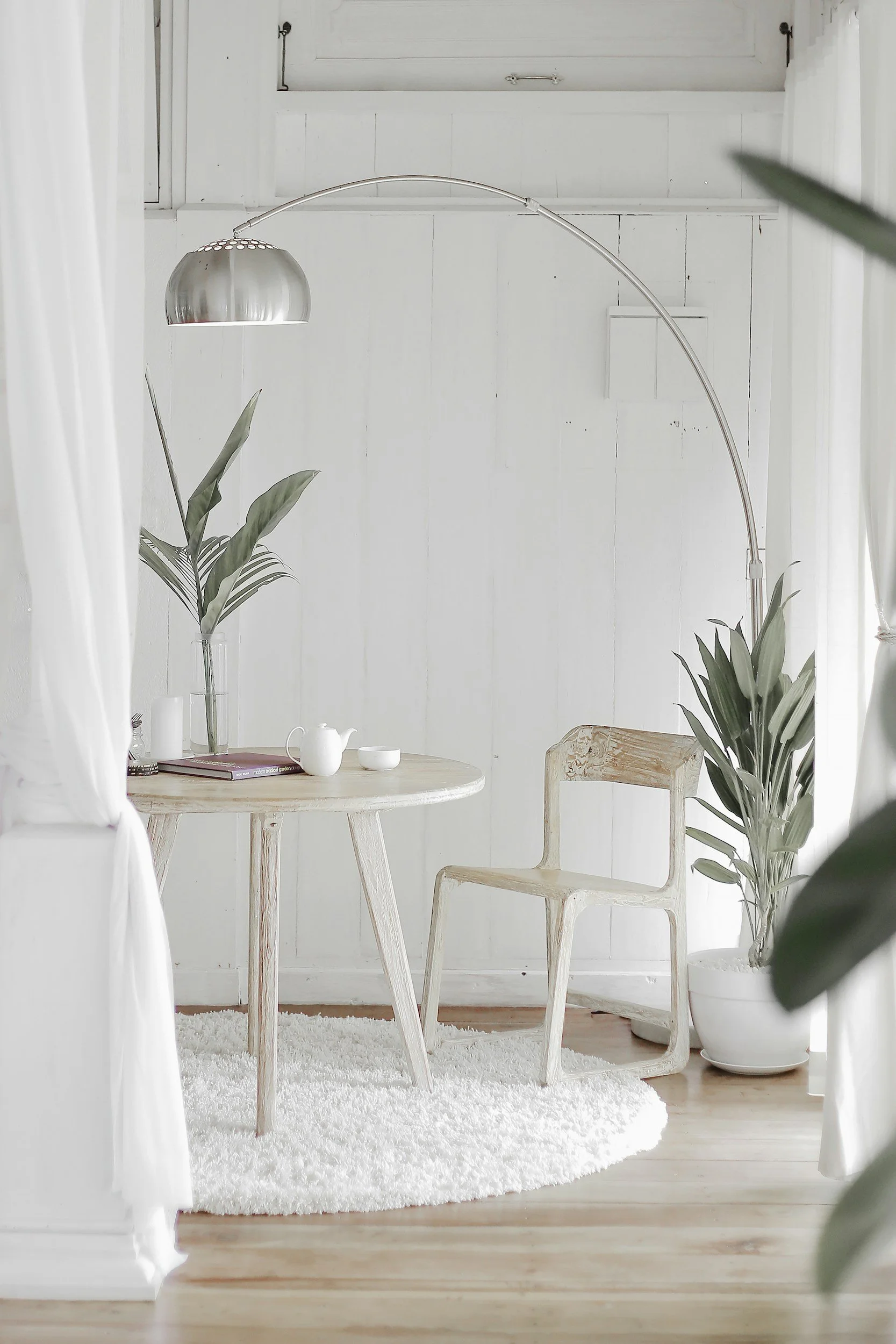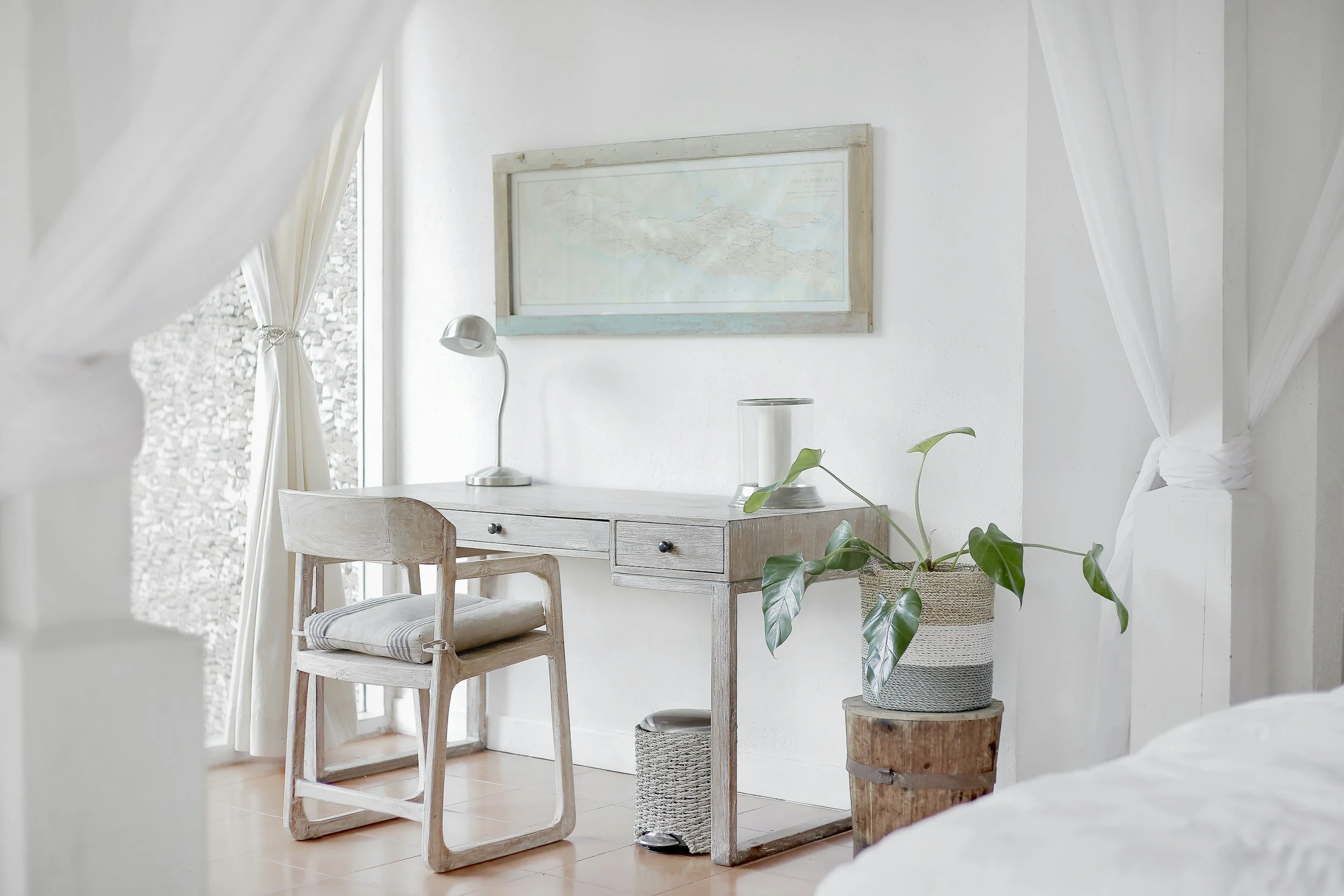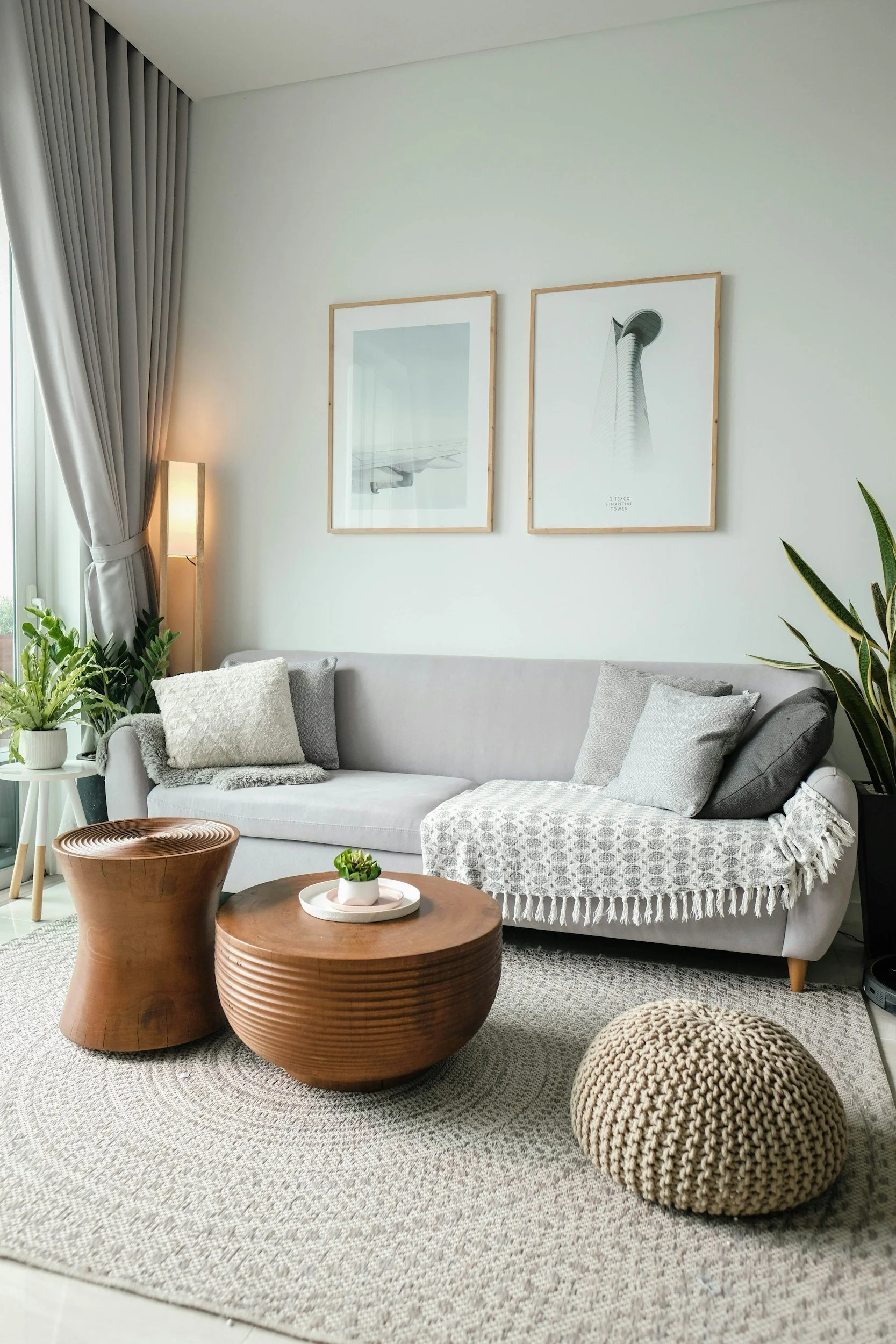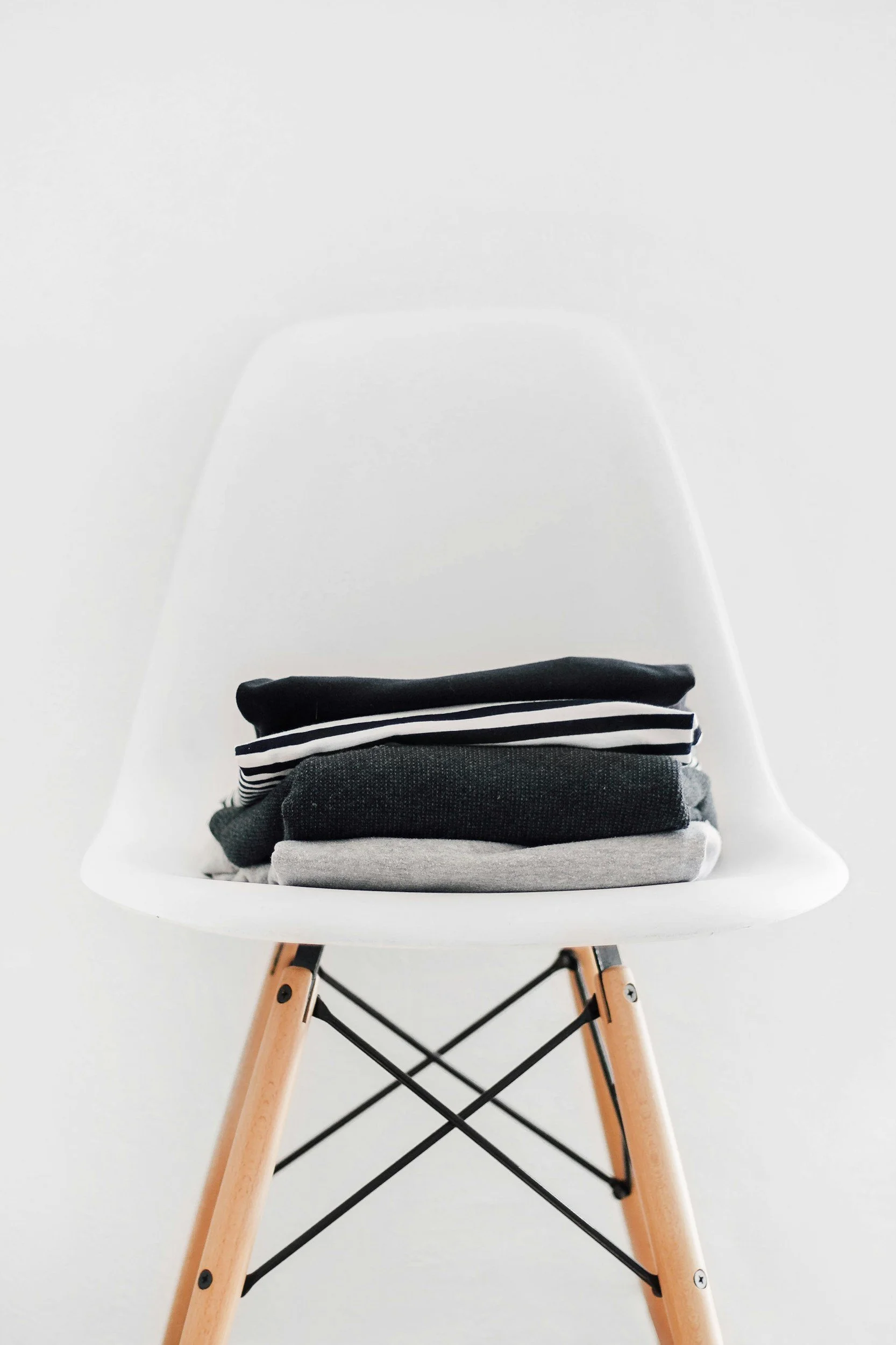Soft Minimalism: A Calmer Approach to Interior Design
In a culture saturated with visual noise, there is something quietly revolutionary about restraint.
Soft minimalism is not simply a design trend—it’s a philosophy of intentional living. Rooted in clarity but infused with comfort, it reimagines minimalism as something human and healing. It’s a style that doesn’t chase perfection, but rather, makes space for peace.
Imagine walking into a room and hearing it exhale. That’s the essence of soft minimalism: a home that soothes rather than stimulates.
This article is your guide to the feel, function, and form of this quietly powerful aesthetic—from its principles and materials to room-by-room applications that turn simplicity into sanctuary.
What Is Soft Minimalism?
Soft minimalism is the natural evolution of traditional minimalism—an aesthetic built on the idea that less is more, but more isn’t forbidden. Where traditional minimalism tends to veer sharp, cold, and clinical, soft minimalism introduces warmth, tactility, and emotion.
It values emptiness, but not sterility. Clean lines, but with soul. Soft minimalism still celebrates reduction, but it embraces life’s messier edges with more compassion.
It’s the linen shirt that wrinkles and still looks beautiful.
The handmade bowl that isn’t perfectly round.
The home that holds space for both silence and comfort.
This is minimalism you can actually live in.
The Mood: Quiet, Grounded, Light
Soft minimalism doesn’t just change what a room looks like—it changes how it feels. It sets the tone for a slower, more considered way of living. The air feels lighter. Time feels slower. And the space itself becomes more than just aesthetic—it becomes a form of therapy.
This style invites you to:
Pause instead of perform
Simplify instead of accumulate
Let go of the unnecessary so the essential can shine
Instead of filling your shelves with knick-knacks, you display just one stoneware vase with a foraged branch. Rather than layering bright pillows and patterns, you use tone-on-tone textures—a nubby throw here, a boucle cushion there.
What results is a visual exhale. A space that feels like a sigh of relief.
Key Principles of Soft Minimalist Design
1. Neutral, Muted Palettes
Color is never loud in a soft minimalist space. Instead, the palette whispers in hushed tones—colors you’d find in nature, worn by weather and softened by light.
The walls might be warm ivory or clay. The furniture, a medley of linen, oak, and soft stone. Even artwork often stays within a spectrum of greige, sand, or foggy blue.
These colors don’t demand attention. They hold space. They reflect the light gently and change with the time of day. They feel grounded, timeless, and deeply restful.
The goal isn’t beige for beige’s sake—it’s harmony without boredom. These palettes allow your mind to relax, your eye to wander softly, and your space to evolve naturally with your life.
2. Natural Materials
Soft minimalism relies on tactile honesty. In a world of synthetics and shine, this style favors materials that feel real:
Unfinished wood with visible grain
Ceramic with a thumbprint
Linen that crumples
Woven textures that invite touch
Every material tells a story—of where it came from, how it was made, and how it might age. These are not disposable pieces. They are meant to weather with you, to absorb life and become part of your environment in the most meaningful way.
The beauty of natural materials is that they never feel trendy. Oak, wool, jute, clay—these substances have been used for centuries. And they’ll still be relevant in the centuries to come.
3. Comfortable Simplicity
The phrase “less is more” often comes with a harsh edge. In soft minimalism, it becomes “less, but softer.”
Sofas are low and sinkable, designed for real bodies, not showroom photos. Tables are solid, rounded, and grounded. Chairs curve gently, and rugs cushion your step rather than just define a zone.
Soft minimalism doesn’t try to impress you with cold sparseness. Instead, it gently asks: What do you need to feel at ease?
This is where minimalism shifts from being an aesthetic to being a way of caring—for your space, your mind, your body.
4. Functional Beauty
Everything in a soft minimalist home has a job—some things are purely functional, others simply beautiful—but nothing is wasteful.
The furniture serves the rhythm of your day: a stool becomes a side table; a bench stores linens; a ceramic bowl becomes a catch-all.
Even beauty has function here. A sculptural lamp creates ambient light. A hand-carved bowl draws the eye and encourages slowness. A large piece of art anchors a room without needing a gallery wall.
There is no excess, but also no emptiness. There’s just intention.
5. Breathing Space
Unlike maximalism, where every corner is curated, soft minimalism leaves room for rest.
Negative space isn’t an afterthought—it’s designed.
Empty walls invite calm.
Uncluttered floors feel expansive.
An open shelf with just one item allows the eye to rest—and appreciate.
This breathing space is where the mind slows down. Where you notice the way light hits a wall, or how a shadow moves through the room throughout the day.
In soft minimalism, nothing is there by accident—but also, nothing is forced.
Color Palette: Understated, Earth-Inspired
The palette of soft minimalism is grounded in quiet confidence. There is no drama, but also no monotony. The hues are soft, layered, and built to last.
Base tones:
Cream, ivory, and warm white
Greige (grey + beige), oat, stone
Pale clay, mushroom, or driftwood grey
Accent tones:
Dusty olive, bone, and putty
Faded blush, sage, or fog
Charcoal and matte black for grounding
These colors don’t dominate. They coexist, flowing from one room to the next without harsh contrast.
Furniture & Layout: Less, With Feel
Furniture
In soft minimalism, furniture isn’t designed to impress—it’s designed to support. Look for shapes that invite relaxationand materials that age gracefully.
Avoid sharp corners, glass, or chrome. Instead, think:
A sand-colored slipcovered sofa
A rounded timber coffee table
An armless lounge chair in textured wool
A bench made from reclaimed wood
A linen pouf near the window
Nothing too heavy. Nothing too fussy. Just a sense of ease.
Layout
The layout follows the same rhythm:
Let light lead. Never block windows; enhance them with light, sheer curtains.
Flow, not clutter. Avoid over-furnishing—leave open floor space.
Asymmetry over symmetry. It creates a more relaxed, organic feeling.
Natural paths through the room should feel intuitive.
Every layout decision should help the room feel calmer, lighter, and more generous.
Room-by-Room Styling
Let’s look at how soft minimalism unfolds across the home:
Living Room: The Visual Exhale
A soft minimalist living room should feel like entering a breath.
Start with a tonal base: creamy walls, oat-toned flooring, a light woven rug
Choose a deep-seated sofa in linen, draped with a textured throw
Add a sculptural table or side bench—simple, but organic
Decor is minimal: a ceramic vase, a raw wood bowl, or one large abstract artwork
Let light and shadow do the talking—embrace empty corners
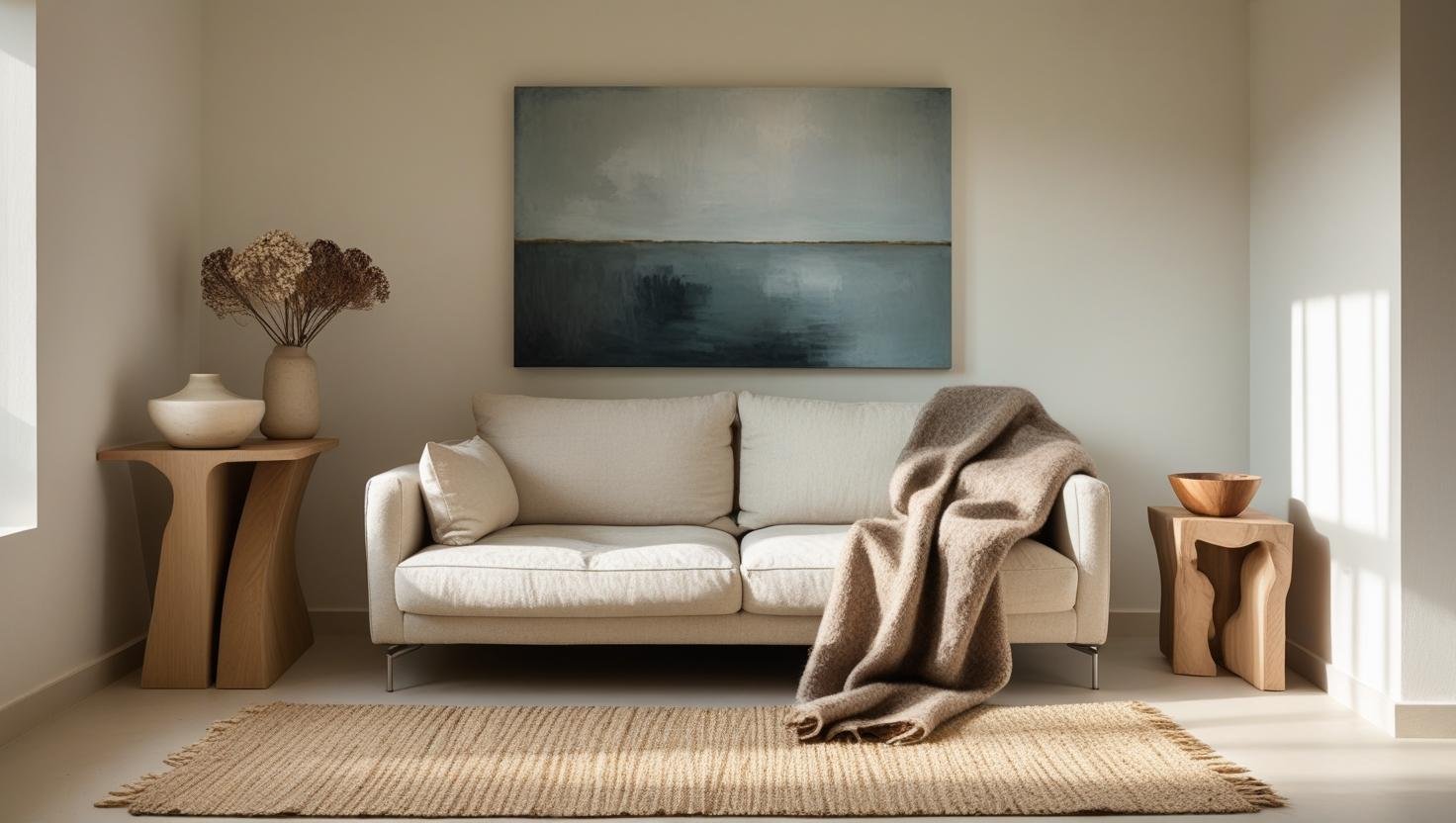
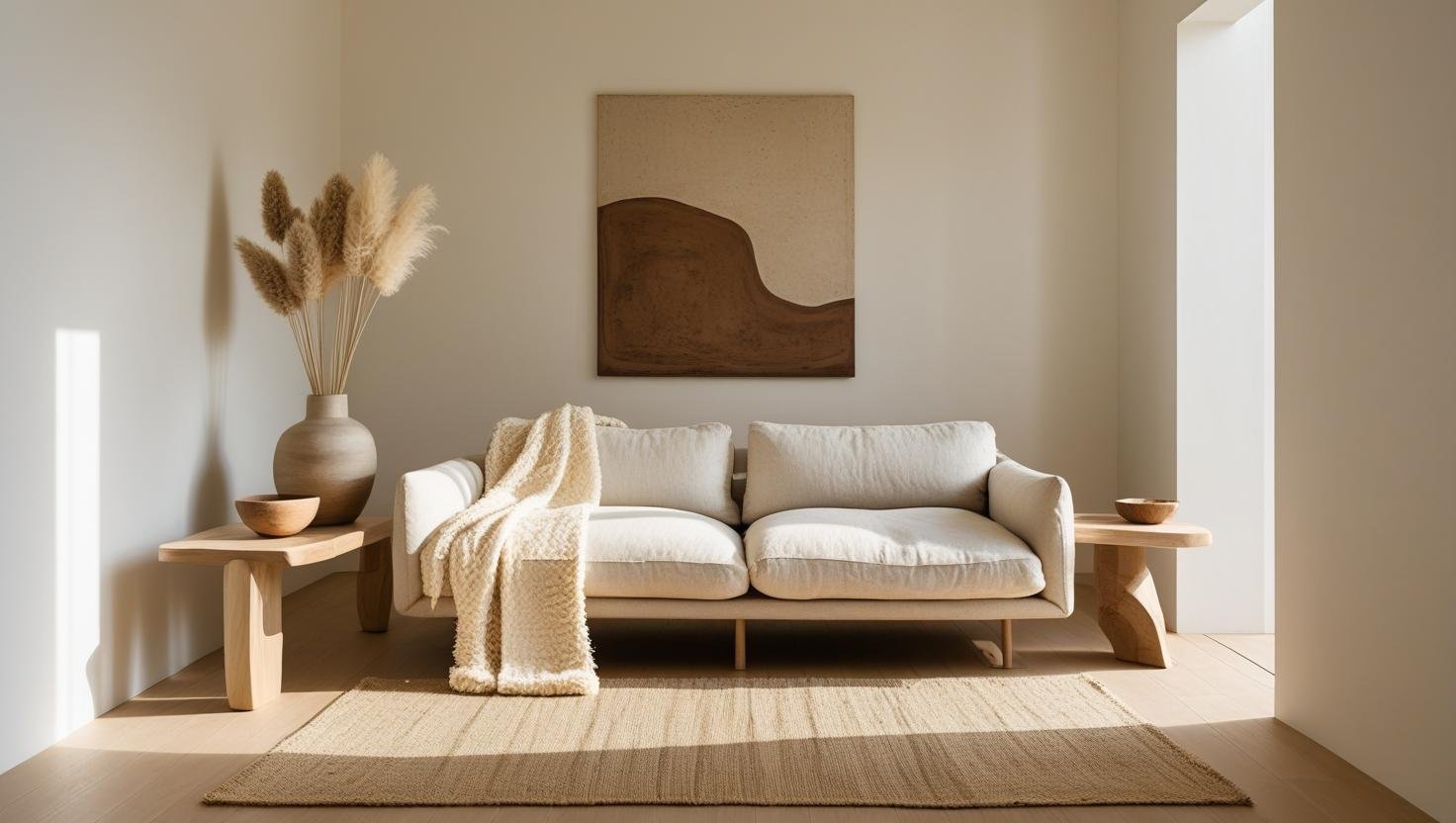
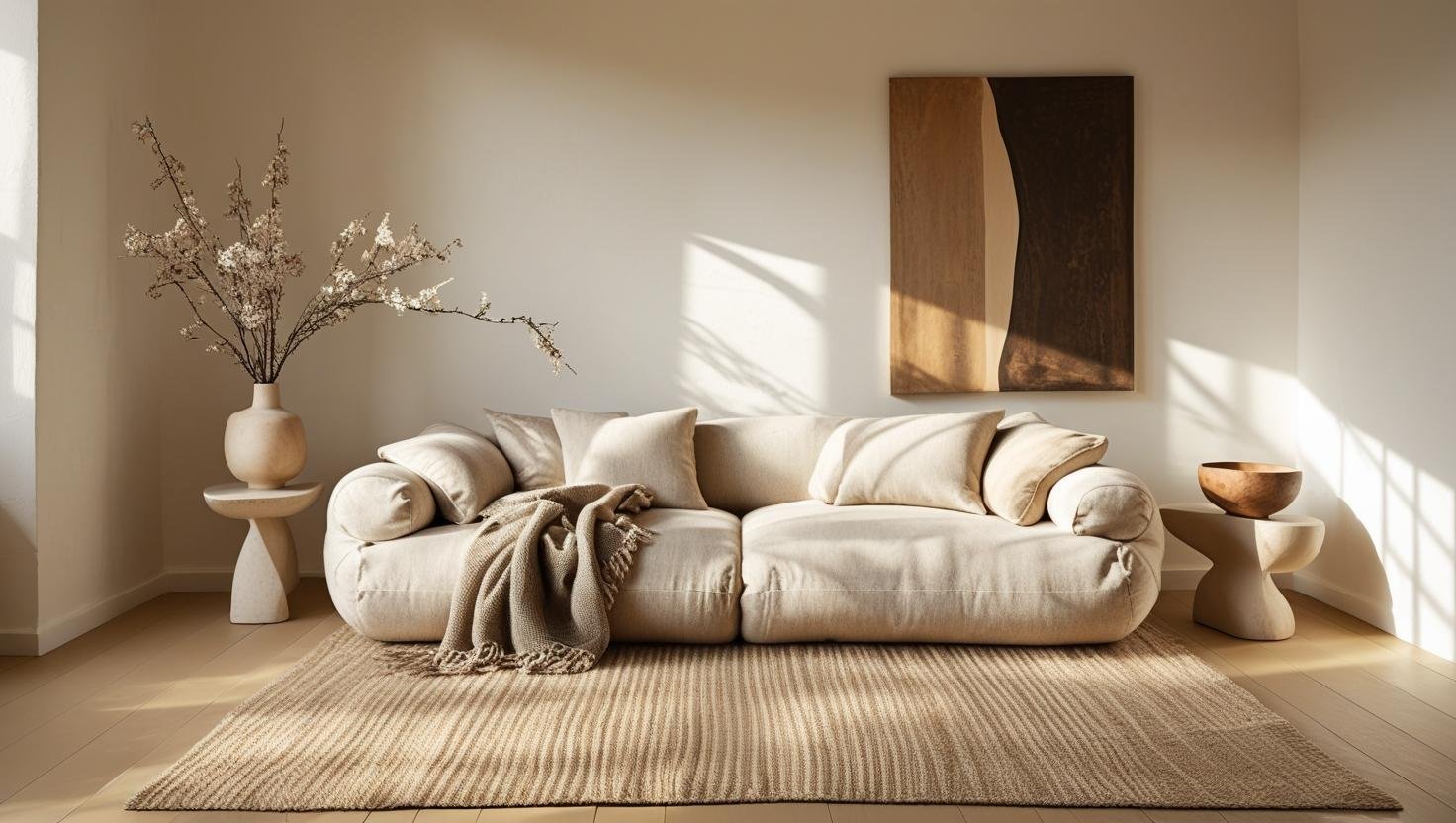
Bedroom: The Quiet Sanctuary
Sleep, in soft minimalism, is sacred. And the bedroom reflects that.
Low, simple bedframe or mattress on a platform
White or flax-colored linen sheets
A single bedside stool or table
One ambient lamp (no overheads)
A soft rug underfoot and minimal artwork or mirrors
No screen distractions. No clutter. Just stillness.
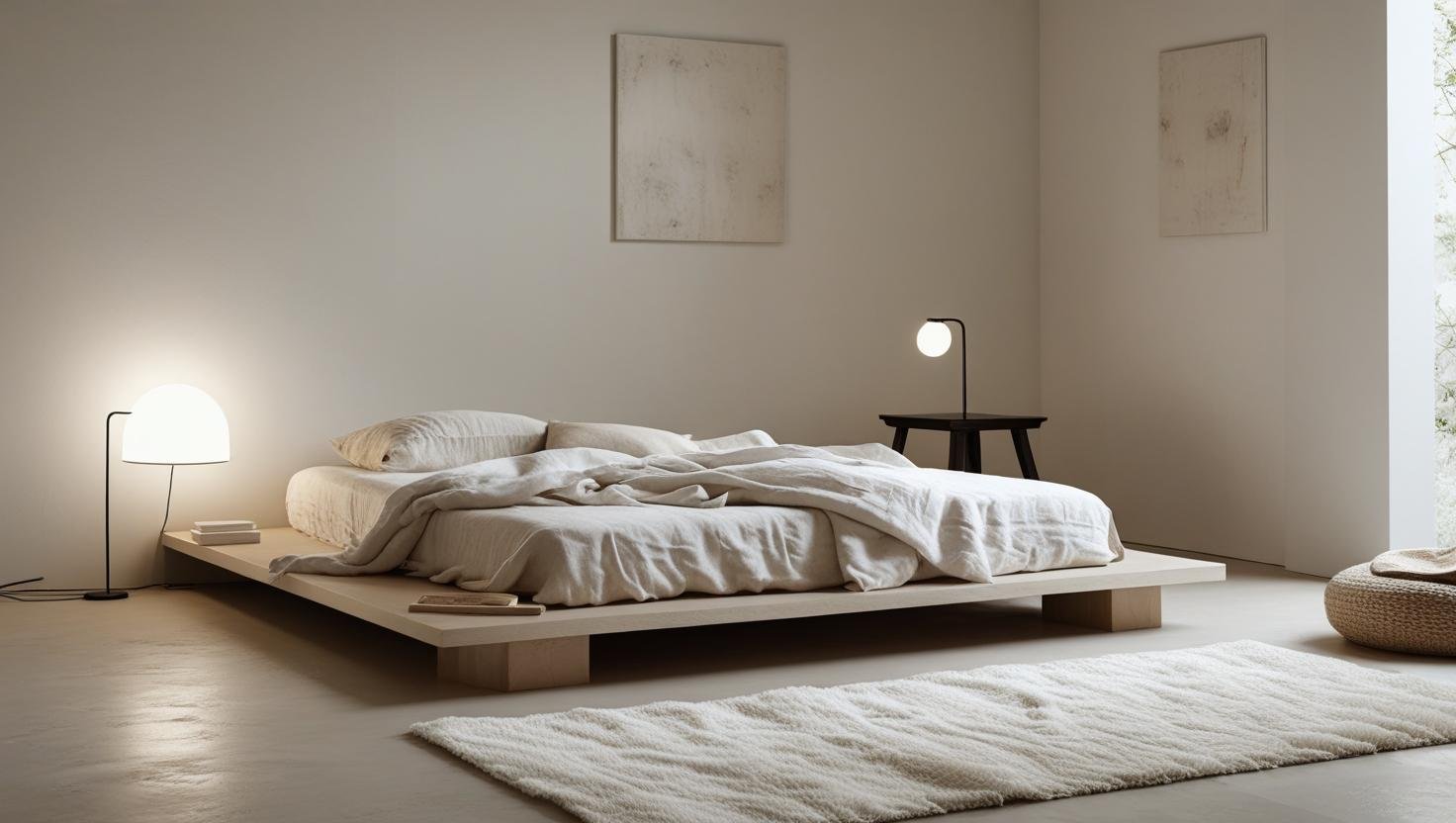
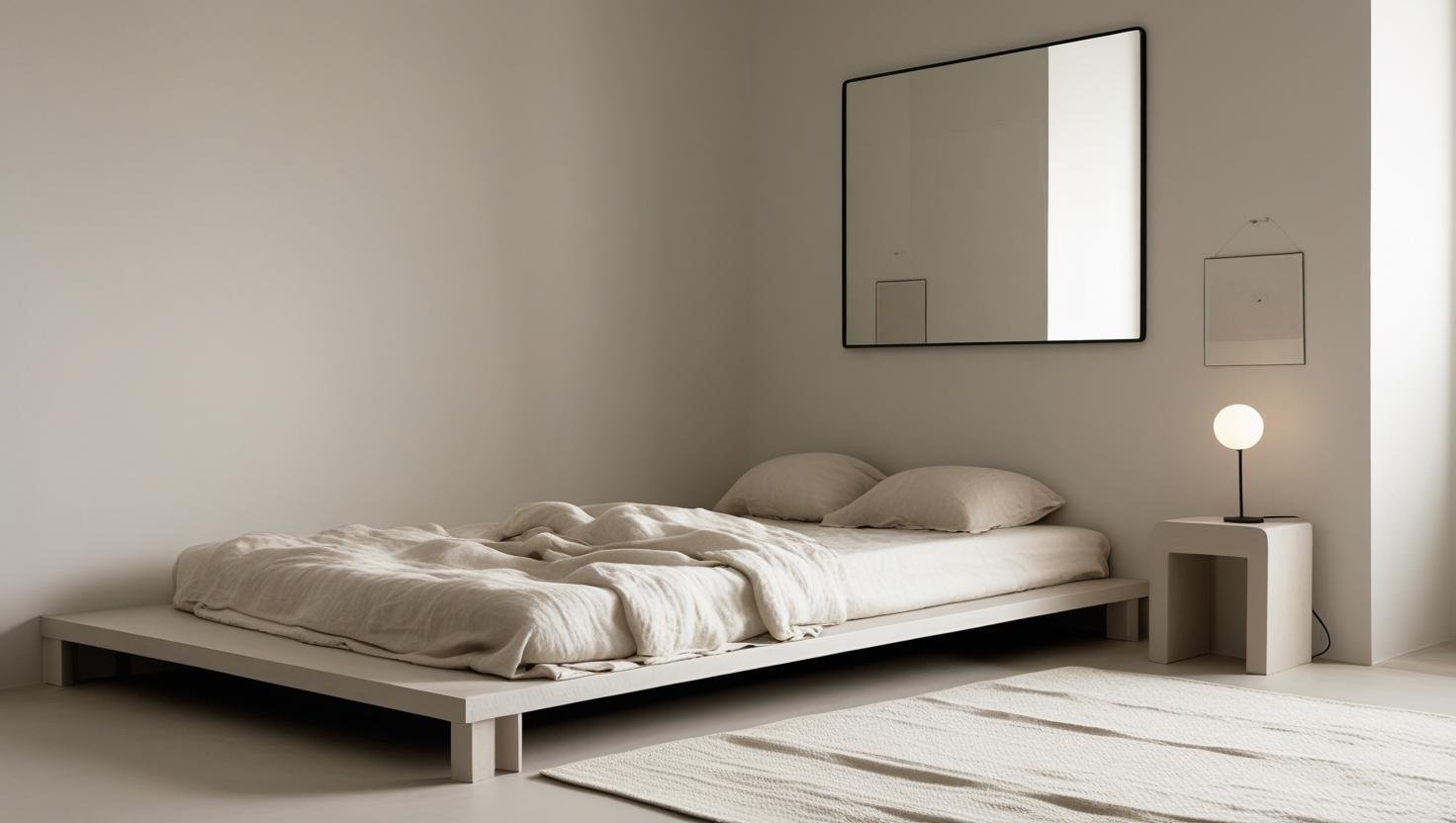
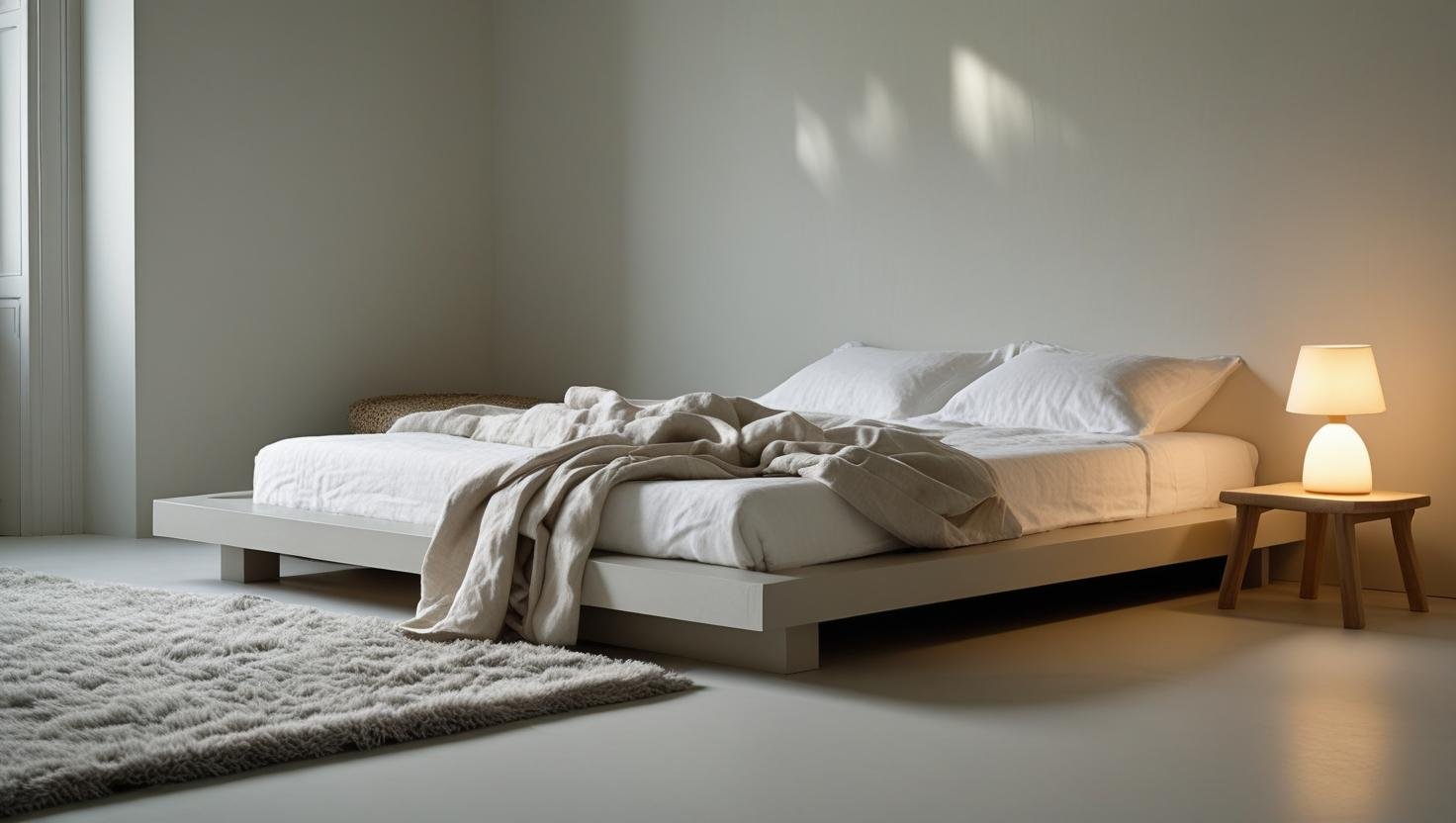
Kitchen: Warm, Practical Simplicity
Functionality with soul. That’s the goal.
Use warm woods, natural stone or concrete countertops
Open shelving with matching ceramics, wooden boards, and clear jars
No over-styling—just what you use and love
Light linen or cotton curtains on kitchen windows
Simple pendant lights and unvarnished materials
Let meals be the focus, not decorations.
Bathroom: Ritual Over Routine
Design your bathroom as a place of pause, not just necessity.
Use stone trays or wooden boxes for storage
Waffle towels in neutral tones
A handmade mug for toothbrushes
Warm light from sconces or dimmable lamps
Minimal mirrors, no clutter, and soft fragrance (lavender, cedar, sandalwood)
Stillness Is a Luxury
Soft minimalism is not about aesthetic superiority. It’s not about designing the perfect room.
It’s about giving yourself—and your home—space to breathe.
It’s about noticing the play of sunlight on the floor.
The quiet of an empty wall.
The relief of a well-made chair, a clear surface, a room that asks nothing from you.
In a culture of too much, soft minimalism is a gentle act of defiance.
And a beautiful invitation to simply be.
📌 Save this for your next interior refresh
🛋 Coming soon: “Soft Minimalist Home Finds to Try the Look”


